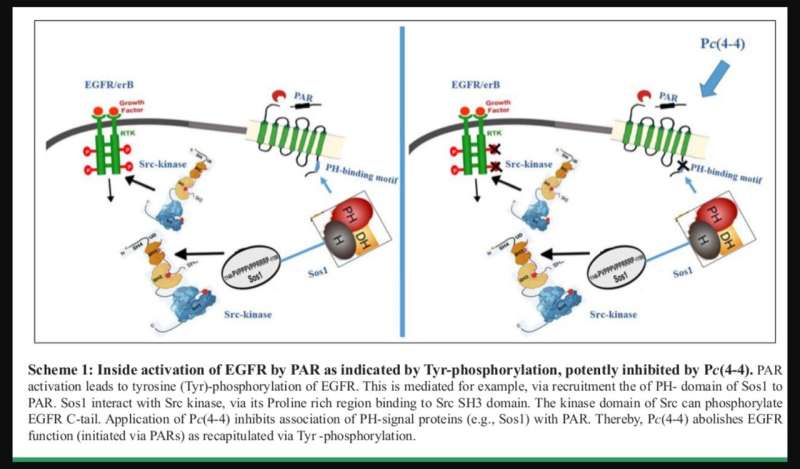This article has been reviewed according to Science X's editorial process and policies. Editors have highlighted the following attributes while ensuring the content's credibility:
fact-checked
proofread
PH-binding motifs as a platform for drug design: Lessons from protease-activated receptors

A new editorial paper was published in Oncoscience, titled "PH-binding motifs as a platform for drug design: Lessons from protease-activated receptors; PARs."
While targeted cancer therapy is greatly dependent on specific oncogenic pathways or conferred by genetic alterations, it remains challenging and somewhat disappointing. The high level of failure relies on the interplay between the dose for desired therapy versus toxicity, namely the therapeutic index. Furthermore, one should take into consideration resistance response that develops with time to a given drug, contributing immensely to the given drawback.
In this new editorial, researchers Jeetendra Kumar Nag, Amnon Hoffman, Chaim Gilon, Beatrice Uziely, and Rachel Bar-Shavit from Hadassah-Hebrew University Medical Center and The Hebrew University highlight the need for alternative targeting routes.
"Although the contribution of G-protein-coupled receptors (GPCRs) in cancer malignancy is growing, GPCR-based therapies are rare," write the researchers.
Importantly, GPCRs are involved in many aspects of tumorigenesis, including proliferation, invasion, survival at secondary sites, cancer stemness and cancer associated signaling pathways. Indeed, big data population analyses indicate the significance of GPCRs as valuable targets for therapy in cancer. Protease activated receptors (PARs), a subgroup of GPCRs, form a family of four members; PAR1-4.
"TCGA and GTEx database show that PAR2/F2RL1 is significantly overexpressed in many types of epithelial malignancies among of which are colon, breast and ovarian cancers," conclude the authors.
More information: Jeetendra Kumar Nag et al, PH-binding motifs as a platform for drug design: Lessons from protease-activated receptors; PARs, Oncoscience (2024). DOI: 10.18632/oncoscience.599





















